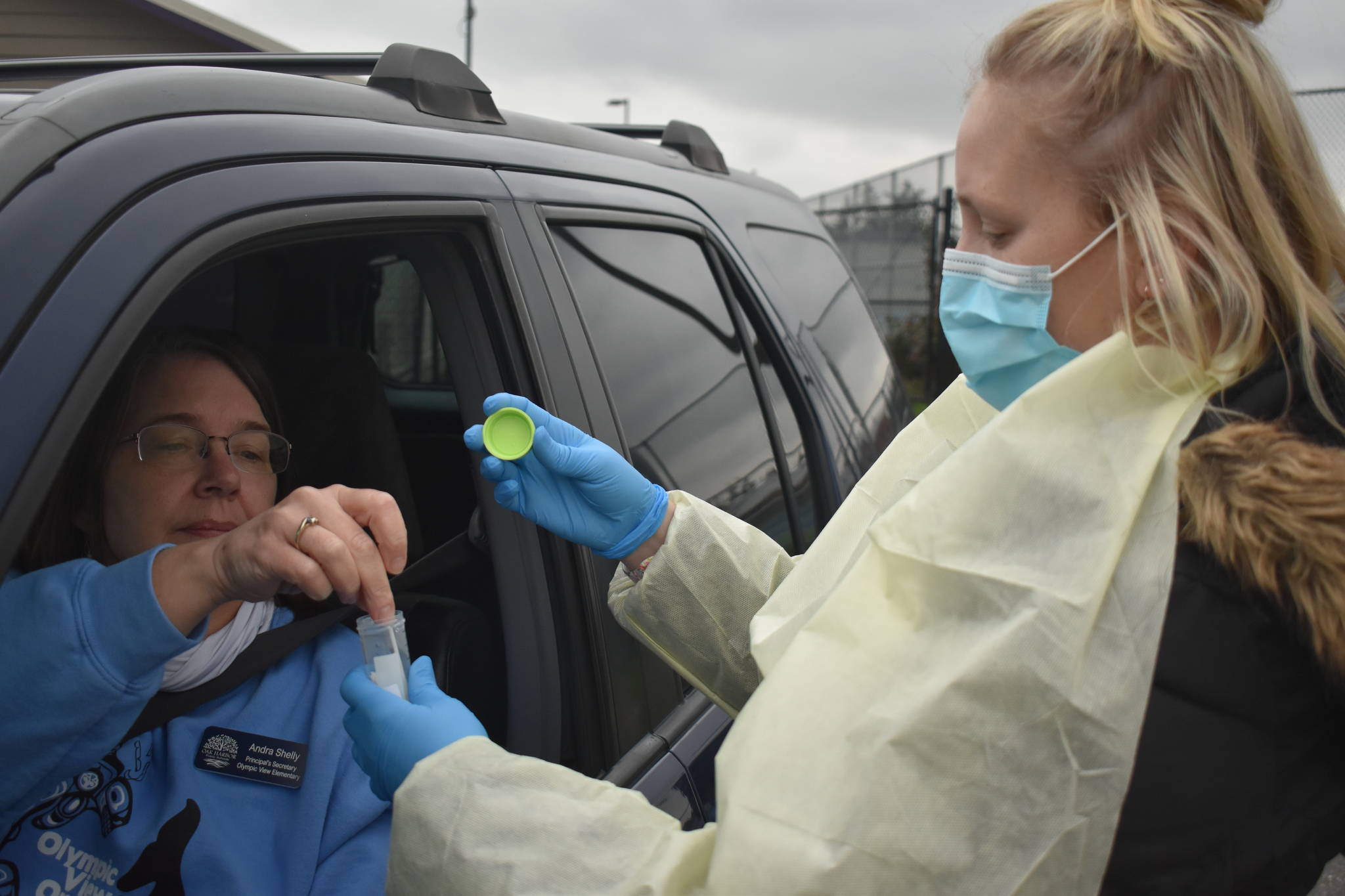Voters will decide on the Oak Harbor Public Schools levy next month and impact what the school district can offer in the coming years.
The $48.4 million levy would be used to pay for things state school funding does not cover, such as sports, arts and advanced classes. It would also pay for seven of the eight nurses in the school district.
If the levy is approved, taxpayers would pay $2.28 per $1,000 of assessed property value.
The state covers 87 percent of the cost of one nurse and the district covers the pay for other seven.
There are 11 school buildings in the district, so each nurse typically covers two schools.
School nurse Robbin White has worked for Oak Harbor schools since 2004.
Although nurses have taken on new duties during the pandemic, she said they were also busy before the pandemic.
“We have a lot of kids who are medically fragile,” White said.
Some of the severe health conditions include food allergies, asthma, diabetes and seizure disorders that require individual health plans for each student. She said the nursing team saves lives all the time by administering EpiPens and inhalers, or responding to seizures.
“I don’t think they realize that we have the critical needs as much as they think we have kids who bump their heads or kids who scrape their knees,” she said of the public.
She estimated that the number of medically fragile students has increased tenfold since she began her job.
White said the increase was connected to the military population and the number of children’s hospitals in the area.
Her typical day during the pandemic includes checking that all of the thermometers are working so they can be used for daily health screenings for students attending in-person classes, making sure all kids have face masks and answering families’ questions.
“There’s usually a ton of phone calls in the morning because someone has been exposed to COVID-19, or has symptoms, and asks what do they do,” White said.
On Wednesdays, school nurses operate a voluntary testing site for teachers and staff at the high school while all students are at home for distance learning. White said about 160 people were tested this past Wednesday.
Before the pandemic, White said she would normally plan her day by figuring out which students needed medications or treatments and when. Treatments could range from giving a student a nebulizer, checking on students with diabetes or helping a student with a tracheotomy tube.
Nurses also respond to health emergencies, of course, such as students bumping heads or falling off swings. They are also called if there is a call to Child Protective Services and a student needs to be seen by a medical professional.
“You try to plan out your day but you never can because you never know what’s going to come up,” she said.
In a perfect world, White said each school building would have a nurse. If a nurse is busy elsewhere, office staff are trained to give medications, but there are situations when a nurse is mandatory.
Besides medically fragile students, there has also been an increase in those with mental health concerns such as anxiety and depression.
In fact, it’s gone “through the roof” in recent years, she said.
The school district has one mental health counselor. Island County used to support two more, but funding ended, according to Superintendent Lance Gibbon. He said he’d like to hire at least two more.
Levy funds would help the district’s mental health supports.
Susan Lof has been a mental health counselor for the school district for four years and said there is a need for more help.
“Honestly, the need was more than I thought it was going to be when I started working with the district,” Lof said.
“There is frankly a lot of trauma and our families need a lot of support, and while we do have counselors out in town, the wait lists are long and it’s hard to get in.”
She primarily works with students at Olympic View and Crescent Harbor elementary schools but will respond if there are emergencies at other schools that require her attention. She talks with school counselors about students they are working with, and meets with students who need more help than school counselors can provide.
Sometimes students are struggling with homelessness, deaths in the family, drug addiction at home, parent divorces or other issues.
Lof said she has seen an increase in the number of families she helps than she did prior to the pandemic.
“Now the whole family system is really, really struggling,” she said.
Like White, Lof said she wishes there could be a mental health counselor at every school and perhaps two at the high school since there are more students.
Both women said they were concerned about how students will be when the pandemic is over and everyone returns to school. White mentioned students in need of sight and hearing tests, which nurses normally do during the year, and Lof said students are going to need to make up some social and emotional skills.
“What they’re going to need is really clear and consistent scheduling again,” Lof explained, “and lots of support in place when we rebuild.”



